For someone who’s just lost a priceless possession, Jim Burton is surprisingly upbeat.
It’s a sunny afternoon in November 2018, and we’re standing in the parking lot of what used to be Hard Rock Park, a 50-acre rock music-themed amusement park just outside Myrtle Beach in South Carolina. Before walking me through the abandoned site earlier that day, Jim—a smiling, bespectacled man with silver hair and a matching goatee—had proudly showed off a prized souvenir in the back of his pickup truck: a large architectural plan of the park, which he helped construct before becoming its technical director.
Videos by VICE
Back in the parking lot after the walk-through, the plan has disappeared, and theft is the only realistic explanation. Jim, who wore his limited-edition “Hard Rock Park Founders” shirt to our rendezvous, is clearly stung by the loss, but he quickly makes it clear that he values memories far more than physical artifacts.
“You can see the circle of life right here in the park,” he says, his brown eyes lighting up. “It started out as nothing. Nothing but a dream. And then the dream comes to life. We saw it in its glory, saw the dream, and the reality. And now it’s returning back to ashes.”
Billed as the world’s first rock and roll theme park, Hard Rock Park opened its gates to the public in the spring of 2008. One of the first things visitors saw when they walked through the gates was a giant electric guitar—rising 90 feet over the park’s central lagoon, the statue loomed into view as park-goers strolled past the bell towers of the entry plaza, modeled after the buildings in the cover art of Hotel California. If they looked down as they approached the water, they would realize they were standing on the frets of another guitar, set into the pavement.
“It started out as nothing,” says Jim Burton, former technical director of the park. “Nothing but a dream. And then the dream comes to life. We saw it in its glory, saw the dream, and the reality. And now it’s returning back to ashes.”
The Gibson statue was iconic, but it wasn’t the park’s largest structure. That was Led Zeppelin The Ride: a roughly 150-foot tall rollercoaster designed in partnership with the band and synced to its 1969 hit, “Whole Lotta Love.” Riders boarded inside a life-sized airship, and speakers blasted the song’s breakdown as they were cranked up the lift hill; the iconic guitar riff kicked in as the train hurtled out of the first loop.
Across the water, a huge mural beckoned visitors into a Moody Blues-themed dark ride called Nights in White Satin: The Trip, designed to evoke a multisensory psychedelic experience. The adjacent concert arenas hosted artists like the Eagles, Kid Rock, and Charlie Daniels; after sunset, the lagoon erupted into a nightly fountain and firework extravaganza choreographed to Queen’s “Bohemian Rhapsody.” Lasers shot from the head of the guitar statue during Brian May’s solo, before a sparkler-covered kite was towed around the water during the song’s final bars.
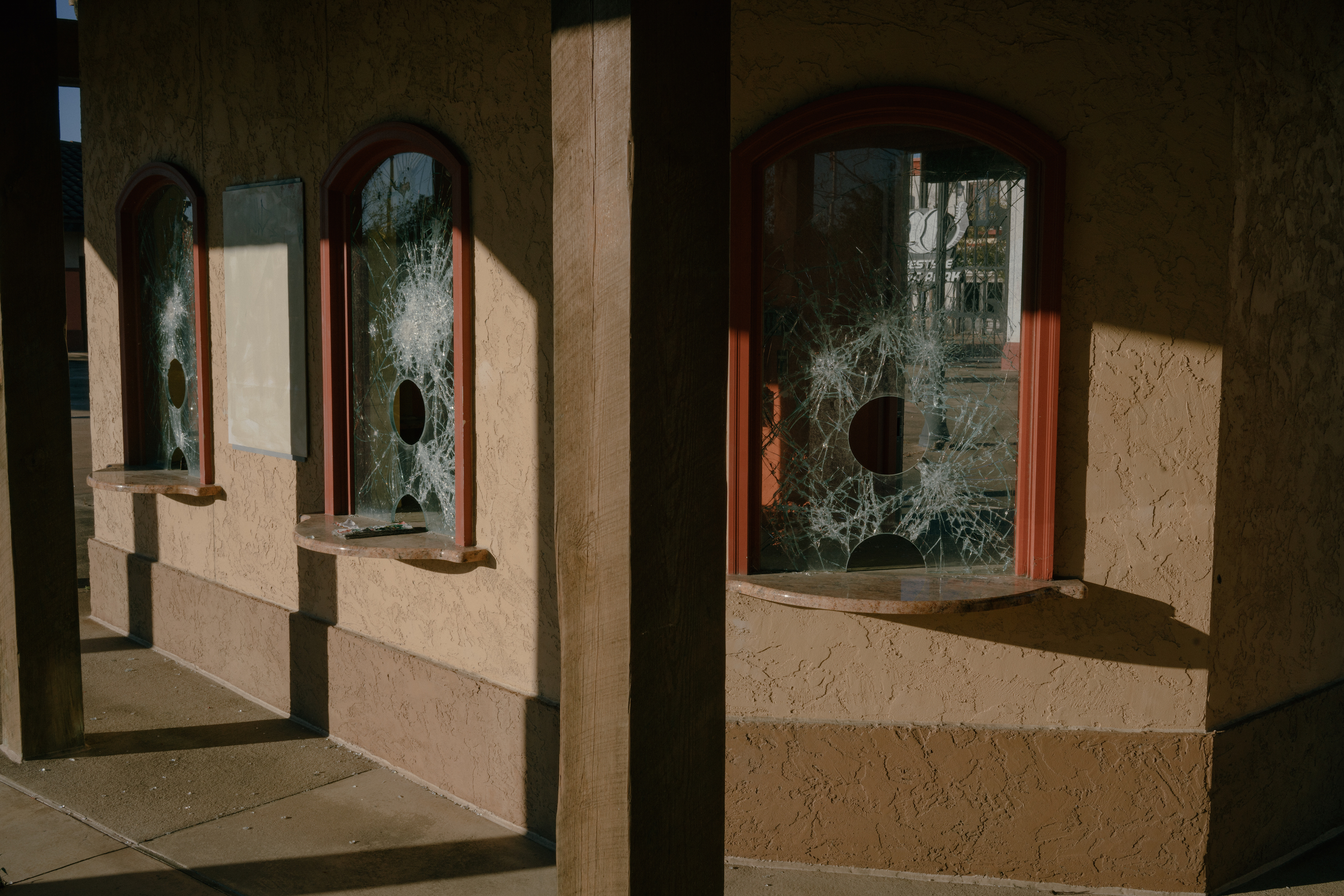
There’s no sign of giant guitars or musical rollercoasters when I walk into the park 10 years after it first opened. Under the bright November sky, the site is deserted, save for a man fishing from a bridge over the lagoon.
Weeds grow through every crack in the pavement, and shrubs and wild grasses sprout from the untended flowerbeds. There’s the occasional piece of vandalism—two crude swastikas spray-painted on a concrete walkway, a giant penis daubed across a life-sized replica of the cover art from The Beatles’ Abbey Road—but mostly, the park is home to plants and animals. The fisherman is gone by the time I cross the bridge, but I catch sight of what he may have been after: an enormous grass carp, cruising lazily through the emerald-green water.
Hard Rock Park was valued at nearly $400 million when it opened in April 2008; barely five months later, just after the collapse of Lehman Brothers heralded the start of the global financial crisis, it filed for bankruptcy, and was subsequently sold for just $25 million. The park’s new owners relaunched it under new branding in 2009, but closed it after only one season. It was never reopened.
“It was probably the biggest failure we have ever seen in our industry, in the shortest period of time,” said Dennis Spiegel, a theme park expert.
In its evolution from baby-boomer fever dream to extravagant multi-million dollar reality, Hard Rock Park exemplified the manic speculation of the years before the financial crisis; the story of its spectacular failure is a cautionary tale of what can happen when expectations become untethered from reality.
“The old days of ‘build it and they will come’—they don’t exist,” said Dennis Spiegel, a theme park expert who was hired by one of the park’s investors to conduct a post-mortem after it first closed. “It was probably the biggest failure we have ever seen in our industry, in the shortest period of time.”

Like the best rock and roll parties, Hard Rock Park started small but got out of hand really fast.
In the year 2000, a 42-year-old Orlando-based entrepreneur named Jon Binkowski bought a small ice-rink theater near Myrtle Beach. He had no professional connection to the music world, but plenty of experience in theme parks: After overseeing entertainment at SeaWorld in the 80s, he had founded his own company, Renaissance Entertainment, in 1989. The theater was part of a cluster of mostly defunct, locally owned venues formerly known as Fantasy Harbour, situated just off Route 501. Binkowski named the theater the Ice Castle, and started a run of shows there starring former Olympic skater Nancy Kerrigan.
“It’s easier to raise a hundred million than ten million,” said Steven Goodwin, former CEO of Hard Rock Park.
Binkowski’s work at SeaWorld had won plaudits, and Renaissance—which he still runs—had picked up design and development contracts from the likes of Disney and Universal Studios. But he struggled to attract visitors to the Ice Castle. He thought building an amusement park next to it might draw a bigger crowd, so he drew up blueprints. Initially, he had trouble finding financial backers—until he met Steven Goodwin, a former executive at British entertainment conglomerate Rank Group, who encouraged him to think bigger.
“It’s easier to raise a hundred million than ten million,” Goodwin told me over the phone from North Carolina, where he now runs a vacation rental business. “Small investors get cautious about deploying modest amounts of capital. But if you have a quality product and show the potential for higher returns, money follows money.”
Goodwin, who would go on to become the park’s CEO, helped Binkowski expand plans for a park, named Fantasy Harbour in recognition of the complex the Ice Castle had belonged to. Thinking that a generic theme would be cheaper than licensing an existing brand, they proposed framing the park around the four seasons. Investors thought this was too plain, so Binkowski countered with plans for a park themed around various Hollywood movies, in partnership with MGM Studios; this, he told me, turned out to be prohibitively expensive.
Then he had another idea. In the 90s, Rank Group—Goodwin’s former employer—had acquired Hard Rock, the rock and roll-themed restaurant, hotel, and casino chain. Since its genesis as a single cafe in seventies London, Hard Rock had broken into North America and expanded rapidly, opening locations in nearly 50 cities, including Myrtle Beach. One night in 2002, Binkowski emailed Goodwin, with the subject line “I’m not smoking anything, I swear.”
“Here’s my wacky thought,” he wrote, in an exchange he later shared in a presentation at an industry conference. “What if we got Hard Rock to give us a license for a theme park?!… Call it Hard Rock Park […] The Nascar types would like it, the Bikers would like it, Families we already know love it…and even the Spring Breakers would visit the attraction.”
As it turned out, Goodwin had done a stint at the Hard Rock business himself after Rank purchased it, spending two years in Orlando during the late 90s as its head of strategic development. He put Binkowski in touch with Hard Rock’s licensing department, who loved the idea. The two parties hammered out a branding agreement, and Binkowksi and Goodwin assembled a small team—including Felix Mussenden, a former Universal executive who became Hard Rock Park’s chief operations officer—to help flesh out their plan. A couple of years later, Rank sold the Hard Rock business to the Seminole Tribe of Florida; Goodwin said they were less enthusiastic about the park, but eventually he persuaded them to honor the branding agreement.
The next hurdle was funding. In exchange for an ownership stake in the park, local landowners and a group of real estate investors had contributed $25 million worth of land and $37 million of cash to the project—but Binkowski and Goodwin needed significantly more money to actually build it. In less optimistic times, they might have struggled to raise what they needed, but this was 2006: the height of the pre-crisis credit boom. They approached bankers and professional fund managers, and within a matter of months managed to borrow $320 million to finance the park’s construction.
They broke ground that same year, brandishing novelty guitar-shaped shovels in front of a giant sand sculpture called “Mount Rockmore,” featuring busts of Elvis Presley, John Lennon, Bob Marley, and Jimi Hendrix. Binkowski’s wacky idea had come to life.
“The whole thing exists because of this small little theater that he couldn’t make work,” said Josh Young, who runs an industry blog called Theme Park University. “The idea was to turn this theater and get it out of debt, and then all of a sudden, it ballooned from this small 25 million-dollar business to a 400 million-dollar budget.”

Myrtle Beach is a tourist town. According to the local Chamber of Commerce, it hosts roughly 17 million visitors every year, compared to a local population of just 33,000 people.
The sunny beaches and temperate waters of the South Carolina coast are the main draw—Myrtle Beach and the surrounding area is often called the “Redneck Riviera,” after its reputation as a budget-friendly regional tourist destination—but the city is also popular with golfers and bikers. In recent years, it has hosted a growing number of sporting events, and it’s been the home of the Carolina Country Music Festival since 2015. Myrtle Beach is also one of the fastest growing cities on the East Coast, thanks largely to an influx of retirees, many of them attracted by the area’s temperate climate and low property taxes.
But the city’s economy is still overwhelmingly dependent on tourism, and this has side-effects. Locals complain of gridlocked streets, crowds of drunk spring-breakers, and occasional violence during high season, while in the winter months, they gripe about job scarcity and an influx of homeless people from colder cities further north. Some Carolinians call the town “Dirty Myrtle,” a nickname that refers as much to its reputation for drugs and prostitution as it does to its polluted seawater.
Outside the old park that weekend in November, I met Brendan, a 20-something who lives in North Carolina but said he spent most of his time with his biker friends around Myrtle Beach. While his buddies pulled wheelies in the parking lot, he told me the city was a hard place for a young person to build a social life.
“Tinder is a bitch down here,” he laughed. “If you swipe during the summer, you’ll match with someone and then you’ll get a reply the next day and they’re like, 300 miles away. And then in the winter there’s just no one around.”
But while it’s not exactly a rock and roll town, it does have a rich musical history: as the epicenter of Beach Music. Characterized by sweet vocal harmonies and the shuffling beats of rhythm and blues, this sound crept through Myrtle Beach and the surrounding coastline as American tourism boomed after the end of World War II.
Beach Music exploded during the 60s, as crowds of mostly white and middle-class holidaymakers flocked to the Myrtle Beach Pavilion to hear groups like The Temptations and The Four Tops and practice the genre’s distinctive dance, a kind of swing-shuffle hybrid known as “The Shag.” A dance hall, entertainment venue, and amusement park, the Pavilion quickly became beach music’s central hub. “It was where the kids made their pilgrimage,” said John Hook, a veteran beach music DJ and local historian. “It was the mecca.”
The movement quietened down in the 70s, a development historians attribute to the social unrest of the hippie era and the increasing popularity of rock music. When it experienced a resurgence toward the end of that decade, the scene had largely migrated up the coast to North Myrtle Beach, but the Pavilion remained its spiritual center; so when local real estate company Burroughs & Chapin announced in 2006 that it was closing the venue for financial reasons, many saw it as a bad omen for the city’s economy.
In reality, Myrtle Beach was already struggling. In the 90s, developers had rushed to build resorts and golf courses to serve the city’s growing tourist market and retiree population; but demand couldn’t keep up, and the resulting overcapacity led many of these businesses to close. By the time Hard Rock Park began construction in 2006—the same year the Pavilion was shuttered—unemployment in Myrtle Beach had already risen well above the national average. As Hook put it, the 2008 crash was “just the cherry on top”.
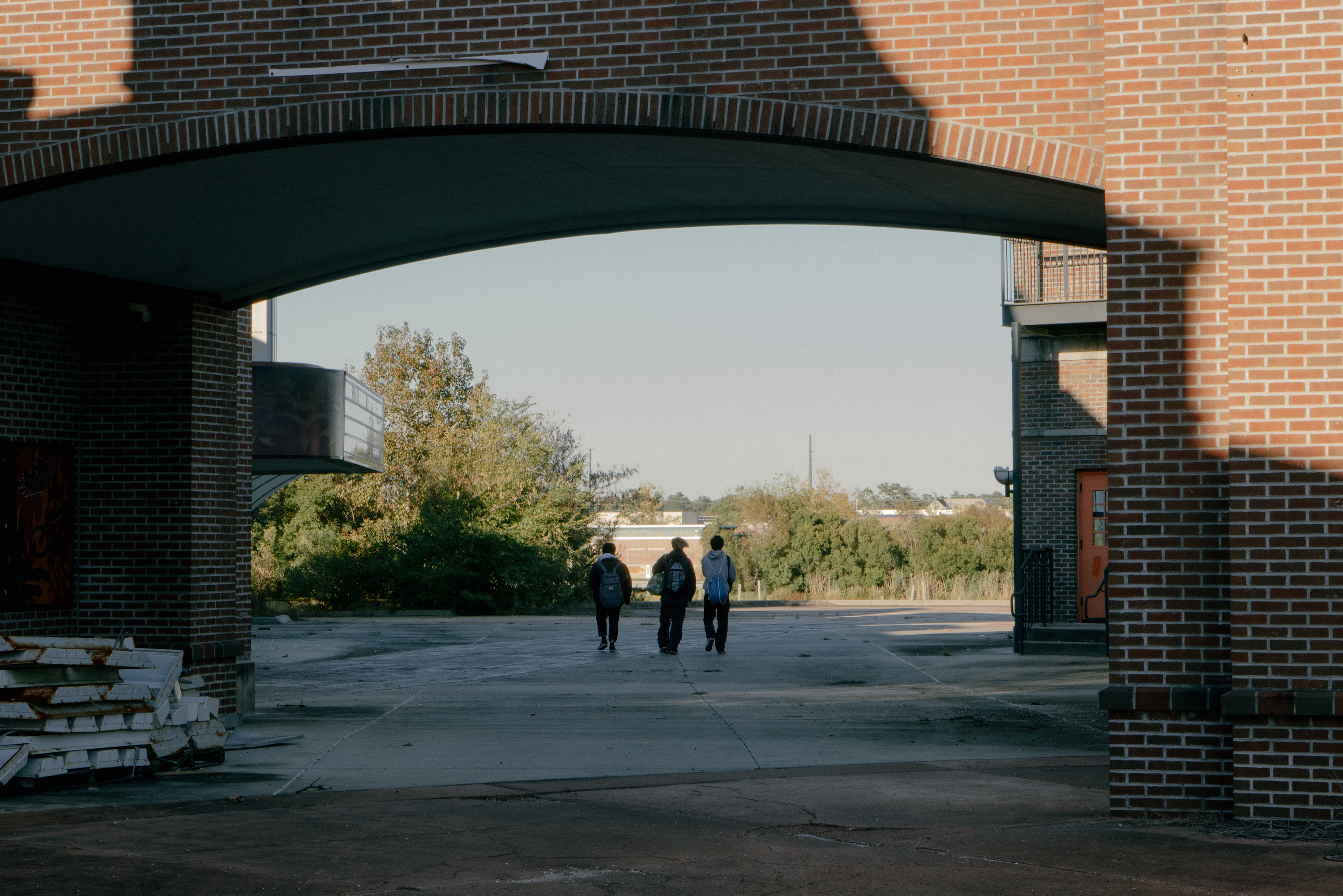
Building an edgy new theme park in a struggling tourist town was the kind of audacious idea that investors would ordinarily run away from.
In contrast to the stock market, where the promise of future growth often drives demand for ownership shares in companies that are yet to become profitable, debt investors generally prefer to lend to business they know can make enough money to pay them back. But when Binkowski and Goodwin borrowed money to build the park in 2006, they were years away from generating any kind of revenue, let alone turning a profit.
The lion’s share of Hard Rock Park’s funding came from a $305 million offering of bonds—interest-paying debt instruments, similar to loans—structured by Goodwin’s advisers at Deutsche Bank and Jefferies. Recognizing that the park was far from certain to generate enough cash flow to sustain this debt, credit rating agencies labelled the deal as a speculative investment, often referred to as “junk.” Junk is a slightly melodramatic term; America is full of speculative-grade businesses, and many of them function perfectly well. However, Hard Rock Park’s debt was at the very bottom end of the junk-bond spectrum, meaning the park had basically zero room for error. If construction went over budget, or attendance fell even slightly below expectations, it was almost certain to fall behind on its interest payments.
But Hard Rock Park’s bankers were confident they could find people who could stomach these risks, Goodwin told me. This was no ordinary time in financial markets; when they began marketing the deal to investors in 2006, the US economy was red-hot. Stocks were were pushing record highs, house prices had risen for more than 40 years without a major correction, and fund managers all over the world were piling people’s savings and pensions into bonds backed by American mortgages. This was driving banks to extend home loans to increasingly risky borrowers, so they could package the mortgages into more bonds to sell to investors, transferring the risk and earning more fees in the process.
Goodwin said he expected Hard Rock Park to appeal to a niche audience of aggressive investors like hedge funds, which aim to generate substantial returns and therefore have a relatively high tolerance for risk. He underestimated the market’s appetite: Regulatory filings from the years around the deal show that many of the lenders that bankrolled Hard Rock Park were large and typically more conservative investment firms, including BlackRock and Eaton Vance.
A drift towards riskier investments is an inevitable part of economic cycles, but left unchecked, it can get out of control. Economists call this irrational exuberance: the point at which enthusiasm overpowers clear-headed analysis of economic fundamentals. It’s almost by definition hard to detect while it’s happening, but can often be identified in hindsight—it tends to precede economic recessions, like the one that occurred in 2008.
Steven Siesser, a partner at corporate law firm Lowenstein Sandler, described investors’ behavior in this kind of febrile environment as a feeding frenzy. “It’s like fishing for mahi-mahi,” he said. “One comes along, then all their friends arrive, and pretty soon they’re hitting a bare hook and you can pull 30 of them out of the water in the space of 30 minutes.”
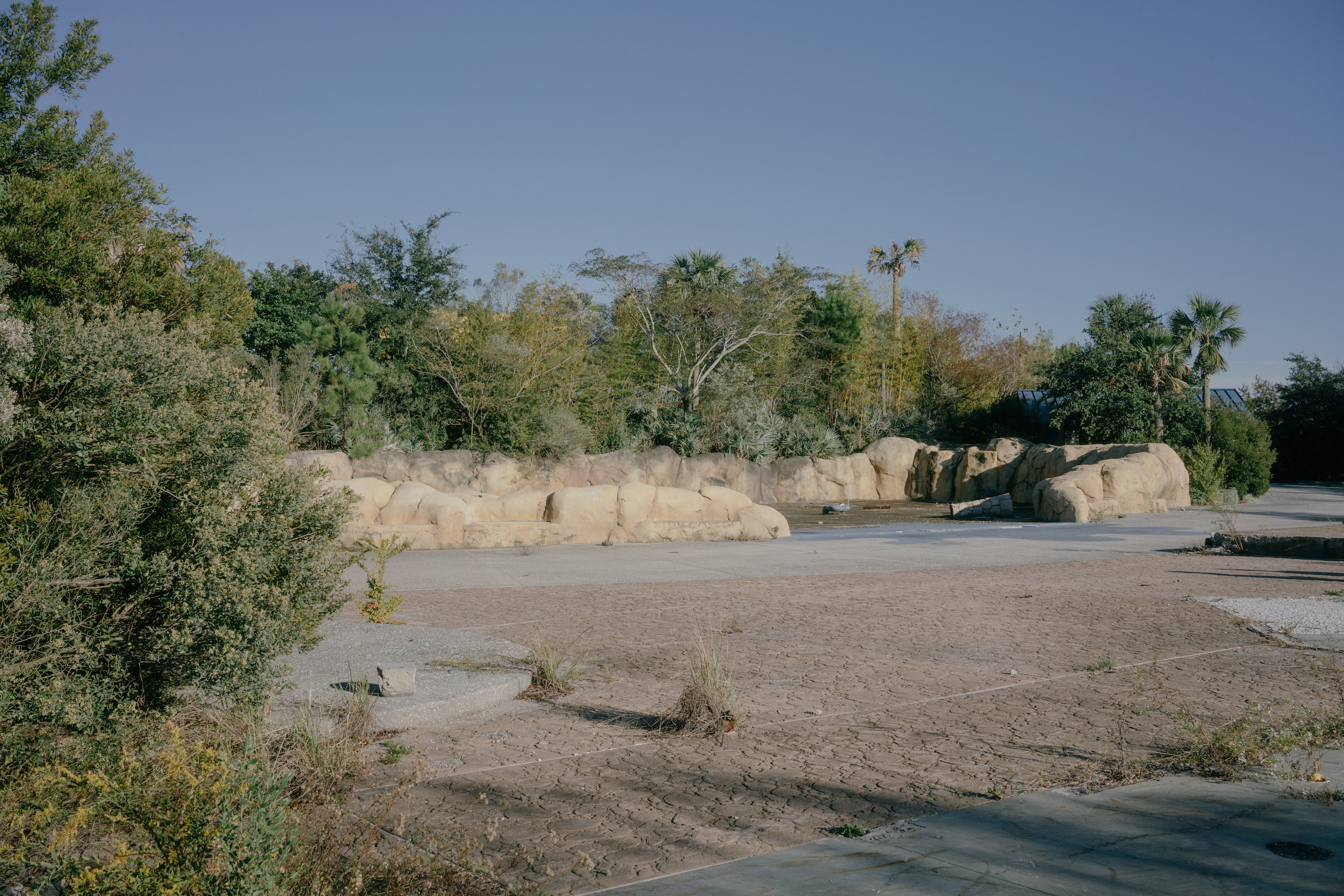
One of the reasons Hard Rock Park got such a low credit rating was because its proposed business model was based on highly optimistic assumptions about attendance. But a large part of its appeal to investors was cultural, as opposed to financial.
The baby boomers who grew up with bands like The Rolling Stones and The Doors are now part of the establishment their musical idols once challenged, and many of those artists have matured with them. This has led to collaborations both intriguing and jarring, from David Bowie’s bankers transforming the royalty streams from his back catalog into tradable debt securities, to UK bank Virgin Money printing Sex Pistols’ album covers on a range of limited edition credit cards. Hard Rock Park was driving at something similar: a new way to monetize a cultural phenomenon that had come to define a generation.
Binkowski, both a boomer and a rock and roll fan himself, knew he wasn’t just pitching to fund managers who controlled large amounts of cash. He was also talking to people around his age, who grew up with the same music as he did and would probably be excited that he had designed a rollercoaster with Led Zeppelin.
“The big seller was always the music,” he told me. “We were a project that was supported by the baby boomers within the industry. That was our base.”
The Hard Rock branding did more than just lend the project legitimacy—it tapped into a kind of collective identity. In terms of age, race, and gender, the Venn diagram of Hard Rock’s sweet-spot demographic and the kind of financiers Goodwin and Binkowski were pitching to was a near-perfect circle.
“It’s highly likely that the investors who were looking at this park were white, male and middle-aged,” said Margreet Papamichael, a director at entertainment consultancy CLEAR Associates. “And Hard Rock fits perfectly with white middle-aged men. That’s where the brand likely resonates most.”

Hard Rock itself had invested no money in Goodwin and Binkowski’s project, however—in fact, it was charging them a fee to use its brand. This meant Hard Rock Park lacked the financial support of a more established company, but it also gave it creative independence.
According to Dave Cobb—vice president of creative development at Thinkwell, a themed entertainment consultancy that recently used Hard Rock Park as a case study for employee training—the park’s wacky design would have been difficult to bring to life under a larger corporate parent. “The license they got from Hard Rock was fairly unfettered,” he told me. “It didn’t get caught in the corporate machine, and that allowed them to do some of these wildly creative ideas that we sometimes don’t see when we’re dealing with intellectual property.”
Many of these ideas were provocative, especially for a family attraction in conservative South Carolina. It wasn’t just the obvious examples, like the acid-trip ghost train or the psychedelic carousel called Magic Mushroom Garden; the park was full of little details that raised eyebrows. A section of Life In The Fast Lane, a rollercoaster named after the Eagles song, rolled past a sculpture of a pregnant woman whose belly was pierced from the inside by a baby making the hand-horns gesture. Restaurants included the “Eat Me” Diner and a fish-and-chips stall called The Cod Piece; a rock-focused tribute to a famous Michelangelo fresco led to accusations of blasphemy.
Not a single aspect of the park escaped the creative team’s meticulous theming. An empty guitar rack just past the ticket booths offered “free air guitars,” while in the bathrooms, a reflective screen that looked like a mirror messed with people’s perception by replaying their movements on a five-second delay. The ATMs were plastered with quotes about money from famous rock songs; even the circuit boxes were decorated with lyrics about electricity.
Some fundamental aspects of the business plan, however, missed the mark. Hard Rock Park’s marketing campaign leaned on extravagant gimmicks, like hiring the Beatles’ last remaining Magical Mystery Tour Bus and towing it around the country on a promotional tour in 2007. The park’s goofy TV ad was heavy on rock and roll attitude but light on information about the attraction, and management failed to strike marketing partnerships with businesses in the area, overlooking the fact that Myrtle Beach was primarily a regional destination where venues thrived on local cross-promotion. Almost every local I talked to about the park said the $50 ticket price was too high, and complained about the lack of discounts for children and locals.
Young, who runs his own entertainment company and has painstakingly dissected the park’s failures on Theme Park University, argues that the management team was blinded by their own brilliance. “They were so convinced they had this slam-dunk of a park,” he told me. “They overestimated what the brand was and what it could bring in. Even if the economy was doing okay, between their marketing and their pricing they would have had an uphill battle.”
The park’s adventurous theming did, however, turn out to be a great recruitment tool. As construction neared completion, Hard Rock Park hosted a huge job fair, promising thousands of positions. Applicants flooded in. “People lined up for hours to get in for interviews,” said Shana Bury, who worked there as an entertainer and accompanied me on my walk around the site last November. “Everyone loved the concept—they loved the brand.”
Management gave many senior positions to out-of-towners who had already established careers elsewhere, but plenty of junior employees also came from outside the local area. “In my mind, it was like we could be the new Disney World or Universal Studios,” said La Vaar Willis, who was 19 when he left his family home in Virginia to join the park as an area manager. “I saw myself maybe making a career out of this.”
Former employees told me the park was a fun place to work, especially compared to other theme parks. The dress code was a particularly big draw: unlike many big Orlando parks at the time, management didn’t discriminate against piercings, tattoos, or wild hairstyles. They actively encouraged them, and let staff wear what they wanted, so long as that included their standard-issue Hard Rock Park shirt. “They wanted to show that we were all part of the show and our own character,” recalled Joshua Liebman, who worked at the park as an operations manager.
A cast of costumed entertainers was given even more out-there outfits, from female palace guards in bearskin hats and skimpy tunics to a mascot dressed as a punk-haired British bulldog named Winston. The most iconic of these characters were the Bear Metal Family—Heavy Dad, Maiden Mom, Glamor Girl, and Speed Boy—who wore silver shoulder pads and black and white face paint in a nod to KISS. They even had their own specially composed theme song, opening with the lines: “Look out Yogi / Step back Smokey / Country bears are too hokey-pokey / Goldilocks wants a pack that rocks!”
The park’s workers embraced this wackiness. It made them feel like they were part of something unique, said Yvonne Grissett, who worked there as a chef and later created a Facebook group for ex-employees. “I loved when I was at Hard Rock Park,” she told me. “You just don’t feel that at a lot of jobs. Most jobs, it’s just a job. Hard Rock was a life.”
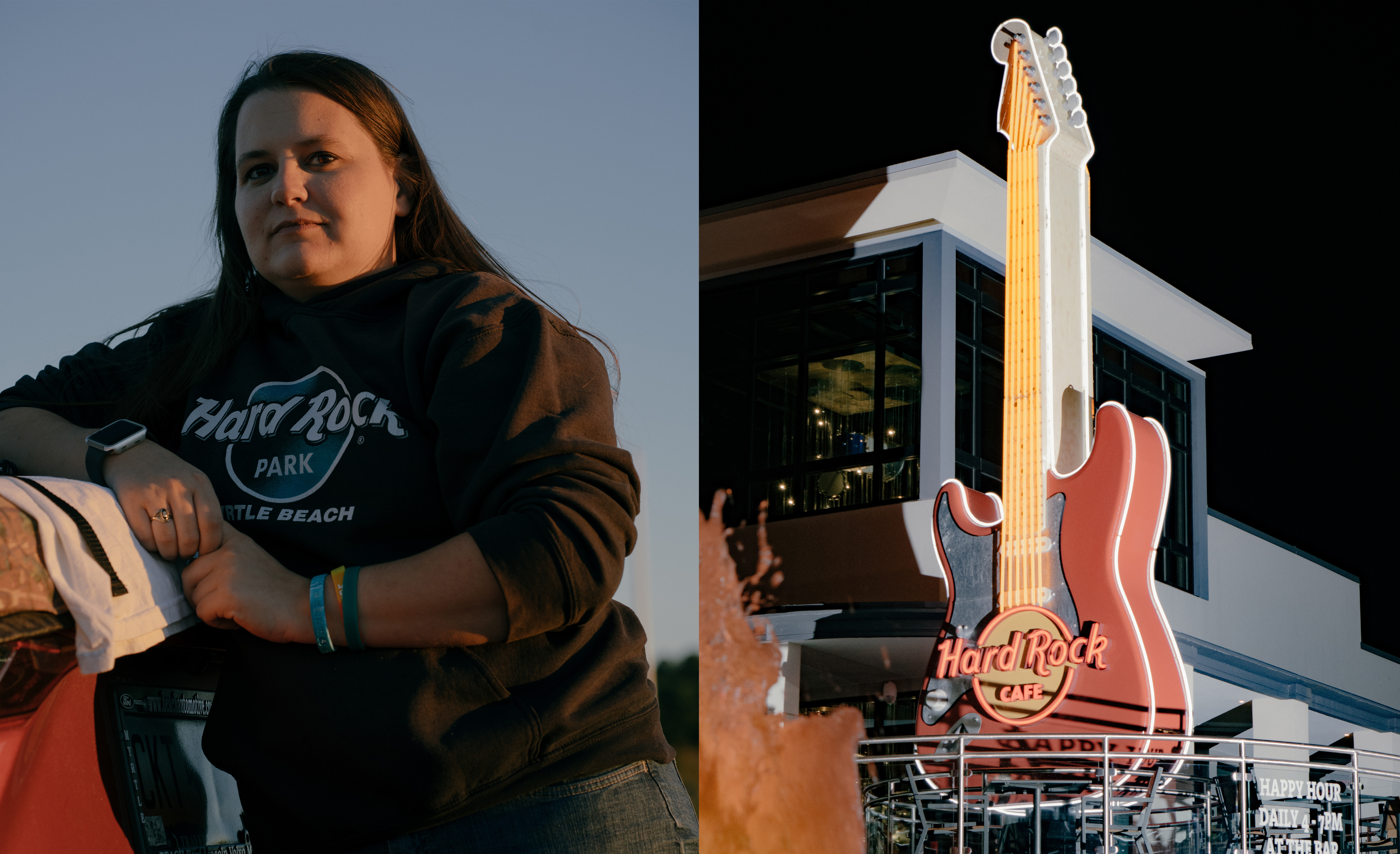
Thousands of visitors turned up for Hard Rock Park’s grand opening in April 2008, drawn by concerts from the Eagles and the Moody Blues. Theme park nerds flocked to the Led Zeppelin coaster, which was made by renowned Swiss firm Bolliger & Mabillard (“The Maserati of the rollercoaster world,” as Binkowski put it). Todd Davis, a telecoms engineer and theme park fanatic from Charleston, bought a season ticket; he told me the Led Zep ride felt like “gliding on air.”
But there are only so many die-hard rollercoaster aficionados in the world, and big-name concerts are an expensive way to attract visitors: Goodwin told me the Moody Blues’ gig cost roughly $250,000. Soon after opening day, it became clear the park was struggling. “You could tell by mid-summer,” said Bury, who often worked the front gates as part of the Bear Metal Family. “Hardly anyone was coming in.”
Attractions like rollercoasters are built to thrill, but a lot of their impact depends on people: the adrenaline kick provided by a big coaster is enhanced by the tension of waiting in line and watching others go before you. This leads to a negative feedback loop if attendance is low, said Papamichael, the entertainment consultant: Fewer visitors means less excitement, which leads to shorter stays and less money spent at gift shops and restaurants. “Not only are you not getting the maximum impact of each ride, you’re doing them all in a very short timeframe,” she explained. “Everything falls out of balance for a theme park the minute that length of stay isn’t there.”
The management team revamped its marketing effort halfway through the season, partnering with local businesses for promotions and even handing out free tickets, according to former employees. This had some success, but it wasn’t enough—as the summer wore on, senior executives shortened the park’s operating hours and began to let employees go. Those that remained anticipated the worst: Willis told me he and his coworkers used to go together to job centers to explore other options. “We saw the writing on the wall,” he said.
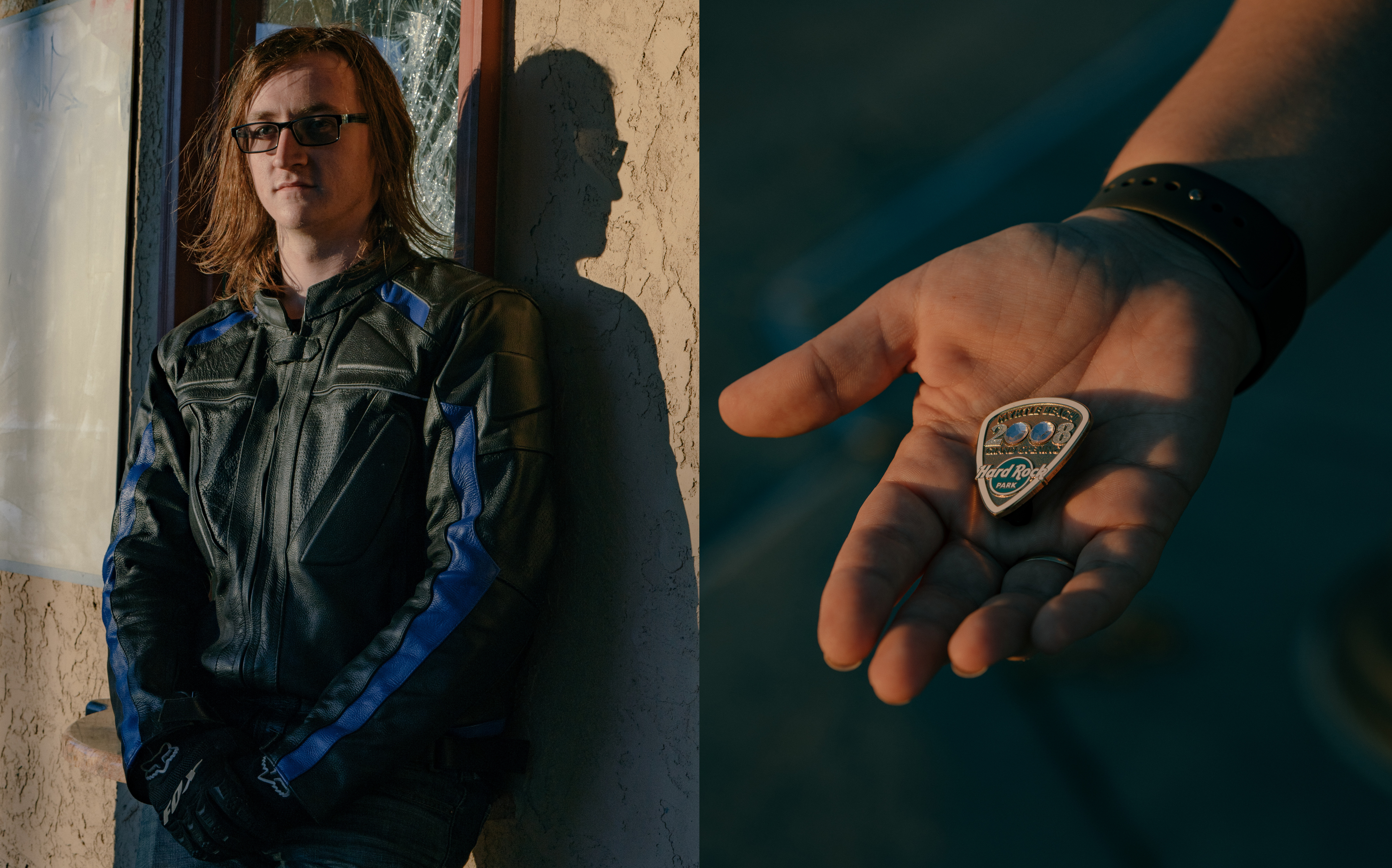
Behind the scenes, Goodwin was talking to investors about restructuring the park’s finances.
Borrowed money is typically paid back using cash from operations or by taking out new debt. But Hard Rock Park had already exhausted its cash reserves, and it was quickly becoming clear that its meager earnings could barely support its existing debt, let alone any additional borrowings. According to court filings, the park generated barely $21 million of income in 2008—not enough to pay interest on its debt and cover credit extended by suppliers, which together totaled more than $30 million.
Businesses that are struggling with debt often choose to file for Chapter 11 bankruptcy, essentially a tool to keep a business active while reorganizing its financial obligations so lenders can be paid back over time. After initially approaching lenders for extra credit, Goodwin eventually opted for bankruptcy. But on September 15, 2008, just as he was preparing the necessary filings, the $640 billion investment bank Lehman Brothers filed for Chapter 11, signaling that the housing bubble was finally bursting. Goodwin grit his teeth and filed Hard Rock Park’s bankruptcy papers a week later, just days before the biggest single-day drop the US stock market had ever seen.
The collapse in markets made reorganizing the park’s finances a lot more challenging. Restructuring a business requires faith that it can be turned around and a willingness among its various stakeholders to give it the chance to do so, both of which were lacking for Hard Rock Park. The slowing economy weighed on its already dismal attendance prospects, while the simultaneous credit crunch saw lenders pull back, unwilling to take on more risk. Hard Rock Park had been a dicey proposition at the best of times, when the economy was booming; in 2008, with multi-billion dollar investment banks faltering and world leaders scrambling to avert a global financial meltdown, it didn’t stand a chance.
“We couldn’t force people to come through the gate in the worst tourist market in 10 years, and we couldn’t force people to restructure at a time when pretty much no one was doing any investment,” said Goodwin. “We were at the bottom of the totem pole.”
As hopes of a restructuring dwindled, Hard Rock Park’s owners put it up for sale. In February 2009, a group of new owners—including a Moscow-based development company called MT Development and some of Hard Rock Park’s initial equity backers—announced that they had agreed to buy the park for just $25 million, less than a tenth of its valuation barely 10 months earlier.
To comply with court rulings around the sale, the new owners re-skinned the park with generic theming, renaming it “Freestyle Music Park.” The Led Zep coaster became Time Machine, the Eagles ride was renamed Iron Horse, and Nights in White Satin turned into Monstars of Rock. A water ride formerly known as Reggae River Falls became even more of a mouthful: Polly Nesian’s Splash Bash. All Hard Rock-branded merchandise had to be destroyed, including thousands of limited edition pins, a niche but sought-after collector’s item.
The park’s new management team claimed the more generic theming would be more inclusive and family-friendly, and pledged to work more closely with local businesses to market the park. They cut ticket prices, offered promotional discounts, and added a kids’ section. It seemed to be working: former employees said attendance was initially better than at Hard Rock Park, and at the end of the summer, Freestyle Music Park’s president, Steve Baker, said the park was “here to stay.”
But consumers were watching their budgets as the recession dragged on and the average local income dropped by nearly $1,000. Attendance once again began to sag, and a legal battle with the former Hard Rock owners over intellectual property was soon followed by a host of lawsuits from suppliers chasing missed payments. In February 2010, Freestyle Music Park’s lawyers announced the venue would not reopen.

The descent of the park into its current derelict state was long and messy. The owners continued to grapple with investors over debt repayments and asset seizures; a local Christian non-profit group tried to crowdsource funds to buy the property and turn it into an education and entertainment complex, but came up short; the owners later sold four acres of the park to Medieval Times, the castle-shaped dinner theater on the neighboring plot, which used the land to graze and exercise its horses. Legal filings show that the rest of the site remained the property of FPI MB LLC, a holding company set up by Freestyle Park’s owners.
In 2012, the shuttered park appeared in an episode of the NBC series Revolution, set in a post-apocalyptic world with no electricity. At the time, the rides were still there, but in the following years they were sold off bit by bit. Some of the smaller ones went to other parks within the US, but the larger ones were bought at pennies on the dollar by Vietnamese group Sun World. The Led Zeppelin coaster is now the star attraction of Sun World’s Dragon Park in Ha Long; it has been entirely rethemed save the loading area, which is still housed inside the giant airship.
By 2015, the property was more or less in the same state as it was when I visited last November: entirely abandoned, save for a single security guard patrolling the grounds. While exploring the site with Burton and Bury that weekend, I met three local teenagers who were goofing around near the lagoon; they said police occasionally roll up and ticket intruders or move along homeless people sheltering in the remaining buildings, but mostly leave the park alone. Brendan and his biker friends told me they hung out in the parking lot most weekends, pulling donuts and practicing tricks; they said members of Christ United, a megachurch across the road, sometimes look on disapprovingly, but have never intervened.
The bikers all thought something should be done with the old property, although they didn’t know what. One complained that Myrtle Beach developers had no imagination: “They’re tearing everything down and building all these hotels,” he said. “Everyone’s going to get sick of just staying places. Let’s find something for people to do.”
In early 2017, former Myrtle Beach mayor John Rhodes was in talks with a group of developers from China who wanted to turn the old park into a Chinese cultural village, with a market and restaurants. He vehemently defended the idea against local opposition, even telling the Charlotte Observer that he saw a future where Mandarin would be taught in the area’s schools. A year later, the deal had collapsed.
Last December, shortly after my visit, a local business owner named Robert Guyton purchased the site for $3.5 million. A local attorney and the former chair of Myrtle Beach’s Chamber of Commerce, Guyton admitted last month to breaking political campaign finance violations in 2009. He didn’t respond to messages seeking comment about his plans for the site, but locals have speculated over possibilities ranging from a drive-in movie theater to an RV park; Bury, who drives past the site almost every day on her way to work, told me earlier this month that it still looked as abandoned as ever.
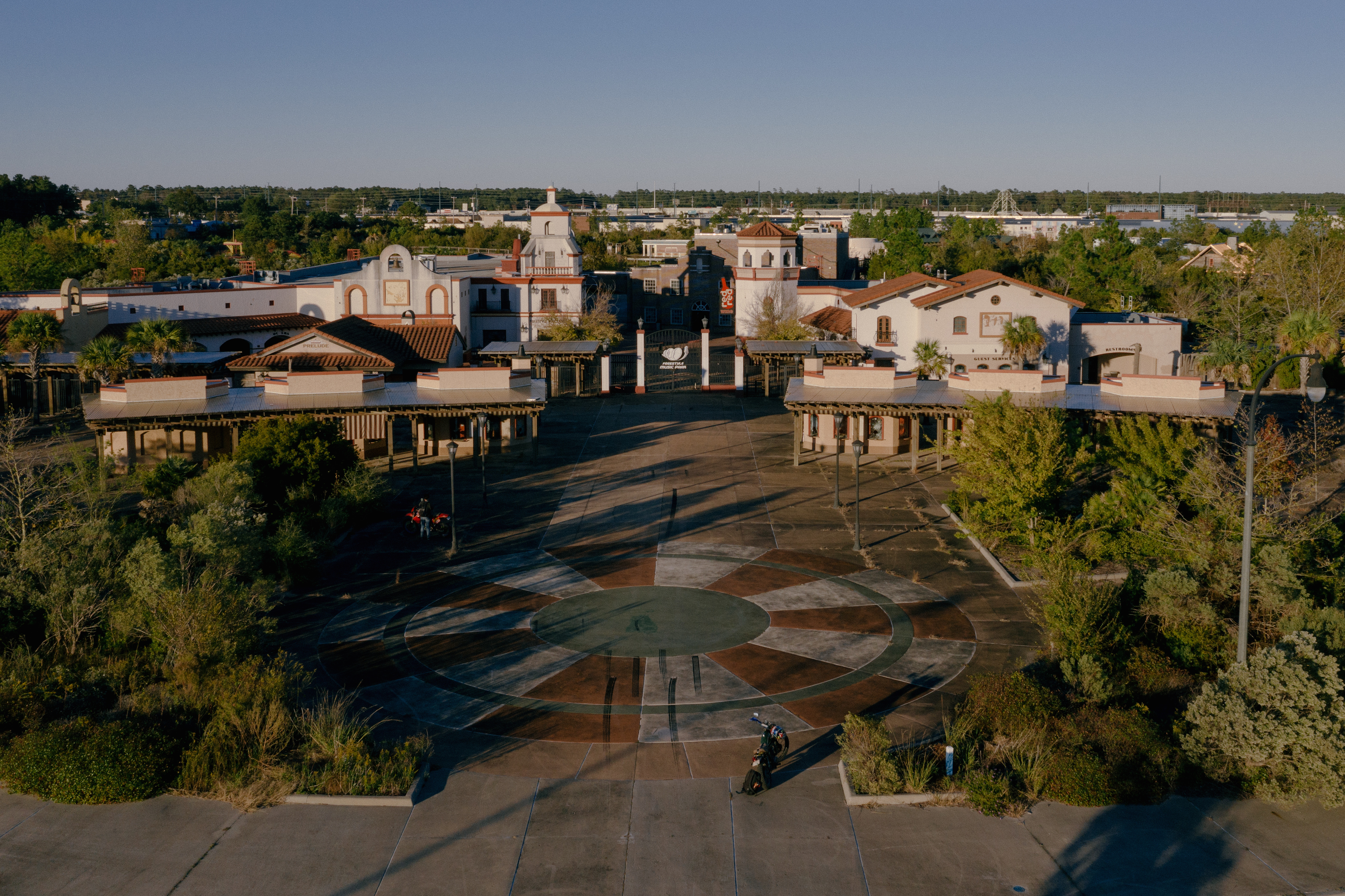
In the movie adaptation of The Big Short, Michael Lewis’s account of the financial crisis, fund managers Charlie Ledley and Jamie Mai visit a shooting range during a finance conference in Las Vegas, as guests of a trader from Bear Stearns. The fund managers are betting against the housing market, and trying to work out whether the people selling mortgage bonds realize—or care—that the market is in danger of collapse. They ask the trader if he thinks rising home loan delinquencies will lead to losses on the bonds he sells; he replies, “Don’t be a buzzkill, dude.”
“They said it couldn’t be done. So we did it anyway,” Jon Binkowski wrote in a book available in the park’s gift shop.
The creators of Hard Rock Park also ignored dissenting voices. “They said it couldn’t be done. So we did it anyway,” Binkowski wrote in The Park that Rock Built, a commemorative book sold in the venue’s gift shop. The park’s financial backers fell for the creative concept and ignored the harsh realities of the market, just as investors were too mesmerized by the intricacy of multi-layered mortgage bonds to remember that their value ultimately depended on over-levered homeowners making their monthly payments. An old adage in investing is that there is no such thing as bad risk, only bad pricing—in both these cases, the risks were heavily mispriced.
It’s not uncommon for developers to borrow money to fund construction projects, but such deals are rigorously built around demand: Hospitals, airports, hotels, and apartment buildings are generally launched into well-established markets. The fact that lenders were willing to fund an extravagant and completely untested concept like Hard Rock Park epitomizes the mentality of the pre-crisis boom. As investment banker William Welnholfer told the Wall Street Journal in 2009: “Only in 2005 or 2006 could you raise this type of financing without some reasonable assurance that the business plan would work.”
A decade on from the financial crisis, the economy has not just recovered but boomed. Along the way, investors have poured billions of dollars of equity funding into fast-growing sectors like technology, hoping to own a piece of the next Apple or Amazon. And as the memory of the last credit-fueled meltdown has faded, debt investors too are being drawn in by the hype around these kinds of businesses. Huge companies like Uber, Tesla, and WeWork have little in common with Hard Rock Park, but they are similar in one important sense: They’ve all managed to borrow money from typically conservative investors without demonstrating positive cash flow. And as with the park, they’ve done so partly by appealing to the kind of emotional impulses—optimism, enthusiasm, fear of missing out—that the people looking after our pensions and savings are supposed to resist.
Economists now say the post-crisis economic expansion has peaked. Housing markets are slowing again, and companies are warning of lower profits. These are just some of the factors that contributed to a frenzied selloff in financial markets during the last three months of 2018. This increased volatility isn’t a disaster, and there are many other influences at play, from global trade tensions and political uncertainty to the increasing role of computer-driven trading in the stock market. But it does suggest investors have been underpricing certain risks, and for many people, this triggers anxious memories of the months before the 2008 crash.
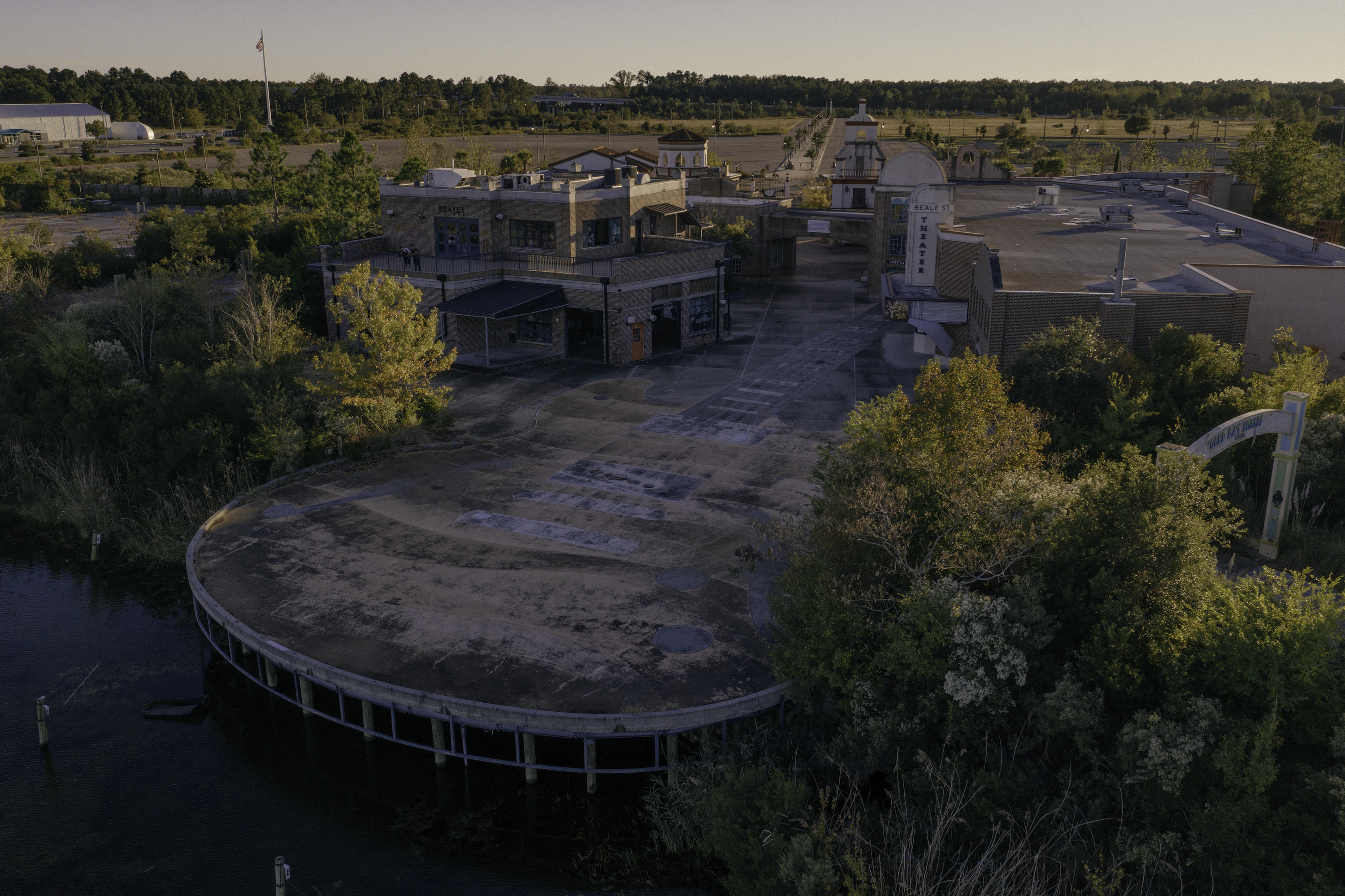
Weeks after my conversation with Jim outside the gates of Hard Rock Park, I found myself staring at aerial photos of the abandoned property as if they were magic eye pictures, waiting for some kind of hidden pattern to emerge. Over time, I began to see the site as a kind of blast crater: a physical imprint of the market’s implosion in 2008, and a timely reminder that some parts of the country are still struggling to recover from the last recession.
Perhaps there’s some truth to that. But maybe it’s simpler—a bit more rock and roll. Before driving off that afternoon in November, Jim paused to offer one last reflection. “Here’s a phrase that I never really cared for, but I’ve heard so much,” he began, before taking an irreverent bow.
“It is what it is,” he said. “And it was a great time.”
Will Caiger-Smith is a writer and reporter based in New York. You can find him on Twitter.
Will Warasila is a photographer based in Durham, North Carolina. You can find more of his work on his website.




